PRDM16 acts as a homeostasis regulation factor to suppress the transition of AKI to CKD via upregulation of eukaryotic initiation factor 6
- PMID: 40551013
- PMCID: PMC12185847
- DOI: 10.1007/s00018-025-05766-x
PRDM16 acts as a homeostasis regulation factor to suppress the transition of AKI to CKD via upregulation of eukaryotic initiation factor 6
Abstract
Progressing from acute kidney injury (AKI) to chronic kidney disease (CKD) is acknowledged as a significant clinical challenge. Our recent works indicated that PR domain-containing 16 (PRDM16) impedes the progression of AKI and DKD. Nonetheless, the specific function and regulatory mechanism of PRDM16 during the AKI to CKD transition remain incompletely understood. In this investigation, it was identified that PRDM16 mitigates TGF-β1-induced renal tubulointerstitial fibrosis in BUMPT cells. From a mechanistic perspective, PRDM16 was found to enhance the expression of eif6, which subsequently suppressed TGF-β, CTGF, and NLRP3 levels via the suppression of the Wnt/β-catenin/SP1 signaling cascade. Additionally, knock-in of PRDM16 in kidney proximal tubules resulted in increased expression of eIF6, thereby restraining the stimulation of the Wnt/β-catenin/SP1 pathway, reducing the production of TGF-β, CTGF, and NLRP3, and consequently limiting renal tubulointerstitial fibrosis progression in both unilateral ureteral obstruction and ischemia-reperfusion-injury mouse models.Moreover, overexpression of PRDM16 following ischemia-induced AKI was shown to attenuate renal tubulointerstitial fibrosis and the eIF6/Wnt/β-catenin/SP1/TGF-β, CTGF, and NLRP3 axis. Finally, the PRDM16/eIF6/Wnt/β-catenin/SP1/TGF-β, CTGF, and NLRP3 axis were analyzed in renal biopsies from individuals with minimal change disease and severe obstructive nephropathy. Collectively, these findings indicate that PRDM16-mediated eIF6 induction serves to impede the transition from AKI to CKD by suppressing the Wnt/β-catenin/SP1/TGF-β, CTGF, and NLRP3 axis.
Keywords: AKI; CKD; PRDM16; eIF6.
© 2025. The Author(s).
Conflict of interest statement
Declarations. Conflict of interest: The researchers affirm the absence of any competing interests.
Figures
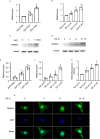
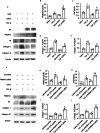
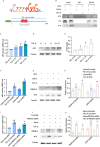
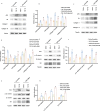
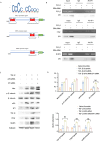
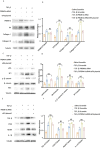
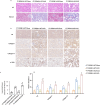
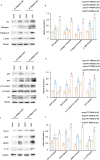
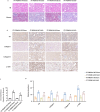
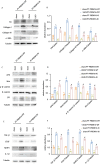
Similar articles
-
Single-cell analysis of proximal tubular cells with different DNA content reveals functional heterogeneity in the acute kidney injury to chronic kidney disease transition.Kidney Int. 2025 Jul;108(1):90-104. doi: 10.1016/j.kint.2025.03.025. Epub 2025 Apr 21. Kidney Int. 2025. PMID: 40268163
-
Increased fibrotic signaling in a murine model for intra-arterial contrast-induced acute kidney injury.Am J Physiol Renal Physiol. 2020 May 1;318(5):F1210-F1219. doi: 10.1152/ajprenal.00004.2020. Epub 2020 Mar 23. Am J Physiol Renal Physiol. 2020. PMID: 32200666 Free PMC article.
-
Taurodeoxycholic acid impairs the function and expression of organic anion transporter 2 through farnesoid X receptor activation during acute kidney injury to chronic kidney injury transition.Drug Metab Dispos. 2025 Jul;53(7):100097. doi: 10.1016/j.dmd.2025.100097. Epub 2025 May 13. Drug Metab Dispos. 2025. PMID: 40513229
-
Anthraquinones from Rheum officinale Ameliorate Renal Fibrosis in Acute Kidney Injury and Chronic Kidney Disease.Drug Des Devel Ther. 2025 Jul 6;19:5739-5760. doi: 10.2147/DDDT.S521265. eCollection 2025. Drug Des Devel Ther. 2025. PMID: 40657042 Free PMC article. Review.
-
From AKI to CKD: Role of miRNAs in disease progression.Life Sci. 2025 Oct 1;378:123836. doi: 10.1016/j.lfs.2025.123836. Epub 2025 Jul 6. Life Sci. 2025. PMID: 40628315 Review.
References
-
- Meizlish ML, Franklin RA, Zhou X, Medzhitov R (2021) Tissue homeostasis and inflammation. Annu Rev Immunol 39:557–581 - PubMed
-
- Fries C, Hermiston ML (2023) Challenging T-ALL to IL-7Rp dual inhibition. Blood 142(2):124–126 - PubMed
-
- Tang PM, Nikolic-Paterson DJ, Lan HY (2019) Macrophages: versatile players in renal inflammation and fibrosis. Nat Rev Nephrol 15(3):144–158 - PubMed
MeSH terms
Substances
Grants and funding
LinkOut - more resources
Full Text Sources
Medical
Research Materials
Miscellaneous

